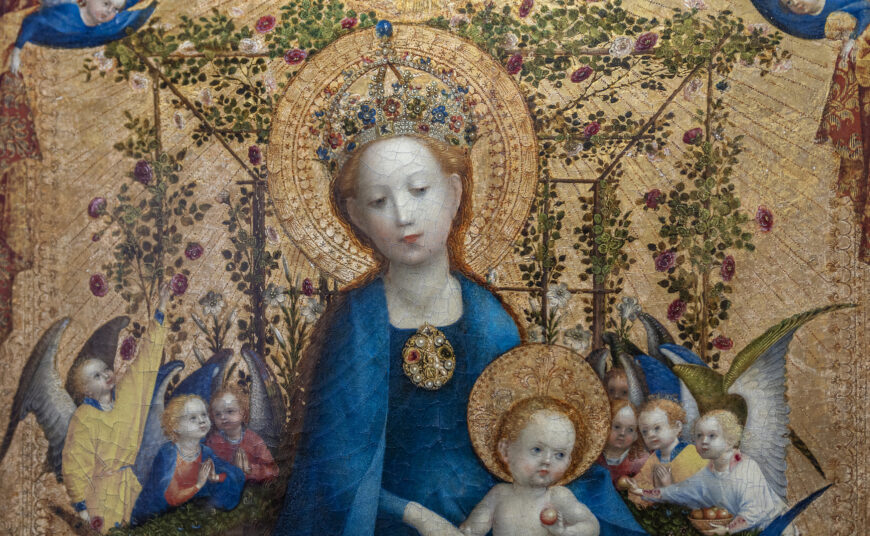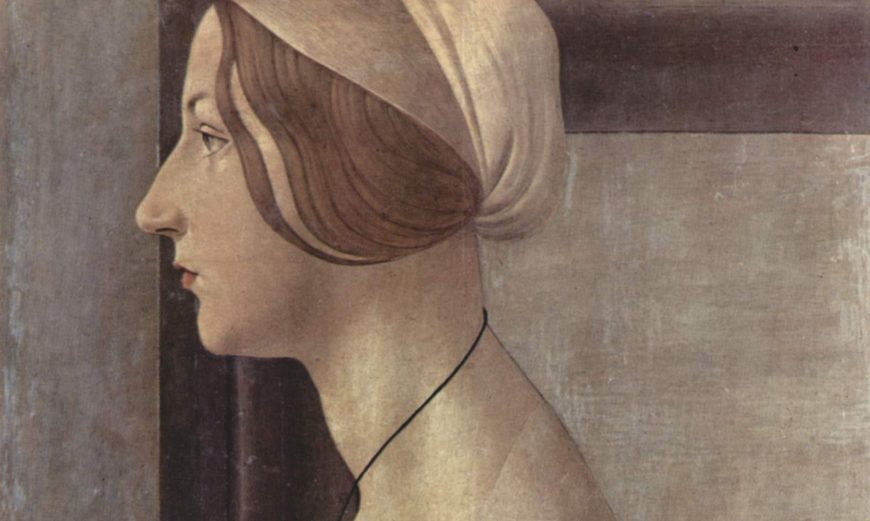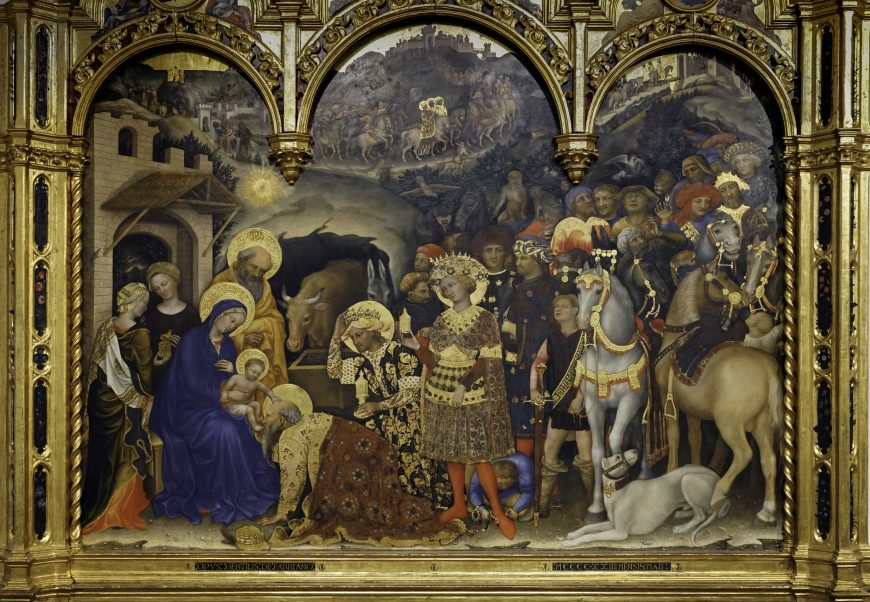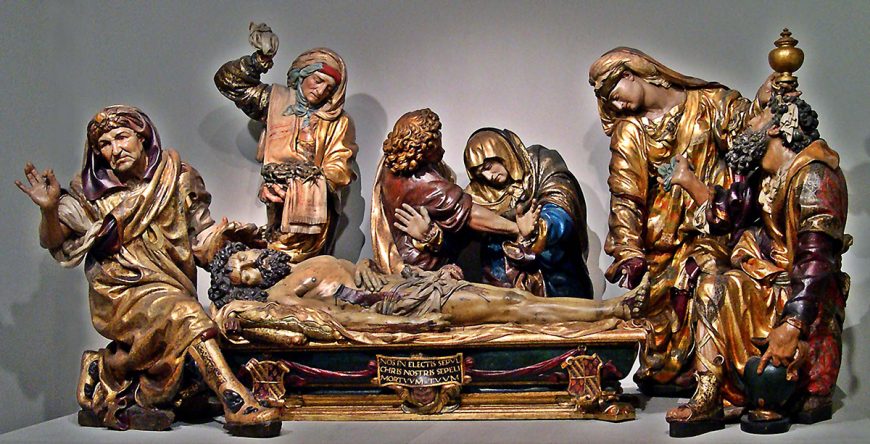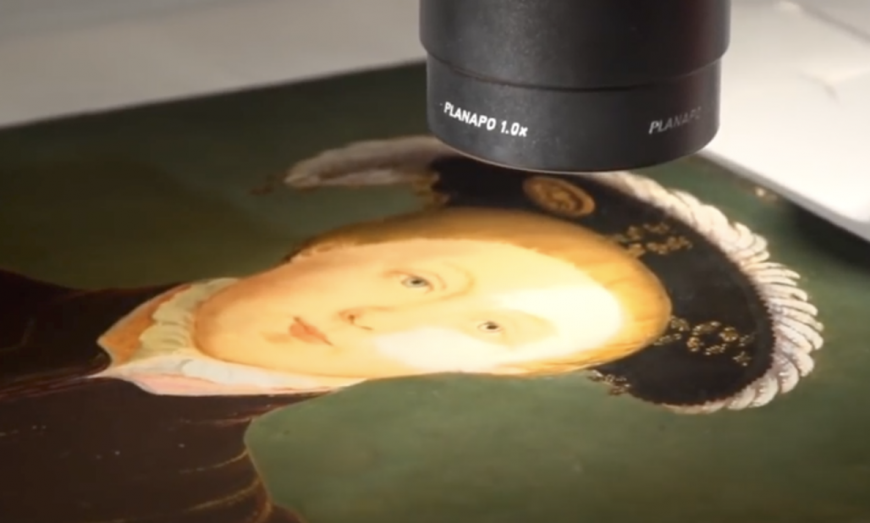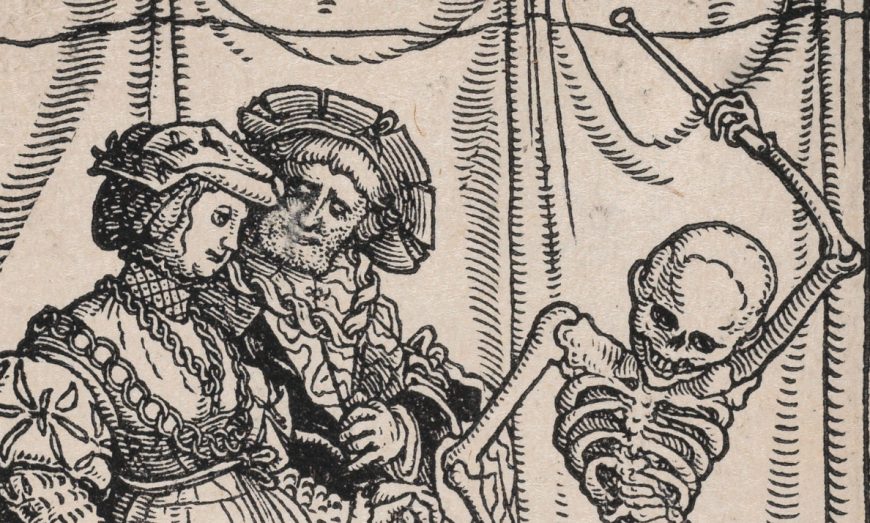Lucas Cranach the Elder, Judith with the Head of Holofernes, c. 1530 (Kunsthistorisches Museum, Vienna)
[0:00] [music]
Dr. Steven Zucker: [0:04] We’re in the Kunsthistorisches Museum in Vienna, and we’re looking at a Lucas Cranach. This is a painting of Judith with the head of Holofernes, which is a biblical story, an Old Testament story.
Dr. Beth Harris: [0:15] It’s a pretty gruesome story, and the painting is pretty gruesome.
Dr. Zucker: [0:19] Holofernes is an Assyrian general that is threatening a Jewish town where Judith lives. The town is about to give up. They’re completely surrounded. But Judith dresses up, makes herself beautiful, and bravely sneaks into the enemy camp. She makes her way to the tent of the general. There’s some suggestion that there’s some seduction involved.
Dr. Harris: [0:38] Holofernes has a little too much to drink. Judith seizes the opportunity and cuts off his head, brings it back to the town, and the Assyrian army flees.
Dr. Zucker: [0:50] It would seem that actually, Judith brought the head back to Cranach’s studio, because he paints it with just an extraordinary amount of detail, so much so that it suggests that Lucas Cranach had been looking at severed heads. If you look at the neck, you can actually make out the vertebrae.
Dr. Harris: [1:05] Well, and it’s painted with that attention to detail that we see also in her clothing, which is really fabulous. This is like a whole fashion statement here.
Dr. Zucker: [1:14] This is the kind of clothing that might have been worn in the Saxon court in the 15th century. In fact, some scholars suggest that this might be a specific princess.
Dr. Harris: [1:21] That’s where Cranach worked, in the Saxon court in Wittenberg.
Dr. Zucker: [1:26] Here, he’s rendered this really interesting contrast between the violence and this beautiful, strong, brave, but refined young woman.
Dr. Harris: [1:36] You’re right. There is a contrast between the gruesomeness of the head and the luxuriousness of what she’s wearing and the passivity of her face. Cranach lavished a lot of attention on her clothing.
[1:49] Look at the embroidery on her bodice, the stitching on her sleeves, her necklaces and those dangling pearls, and look down at her gloves that have slits in them by the knuckles so that she can bend her fingers and we can see all the gold jewelry that she’s wearing. There’s something really aristocratic about her clothing and about her demeanor.
Dr. Zucker: [2:13] When you’re describing the incredibly detailed garments, this just fabulous court costume, I can’t help but notice another kind of contrast, not just between the gruesomeness of the severed head and the beauty of the young woman.
[2:25] You know, you were describing those gloves, those hands, and they’re so beautifully modeled with light and shadow. They turn in space so well, but if you look at certain other patterns within the dress, they seem so flat.
[2:36] In fact, the entire image — and this is very much a characteristic of Cranach’s style — the whole thing is somewhat two-dimensional, and there is this heavy decorative quality that Cranach is clearly interested in.
Dr. Harris: [2:48] The colors, those reds and oranges and golds and the gold of her hair, really make her flesh stand out against that black background.
Dr. Zucker: [2:57] There is a sense of eroticism here, too. Her bodice is quite low. There’s a lot of flesh that’s displayed, especially as it’s highlighted by her necklaces. But all of this, interestingly, is within a highly pitched political context. Wittenberg was the origin of Lutheranism.
[3:15] This artist was a very close personal friend of Martin Luther. Some art historians have suggested that the story of Judith, which Cranach painted several times, was important as a symbol of resistance against the Catholic tradition. Specifically against Charles V, the Holy Roman Emperor.
Dr. Harris: [3:34] So I think there are a couple of potential readings here. One is political, in the idea of resistance against the enemy and bravery, an idea of the Protestant resistance to the Catholics, but also a different reading of a dangerous and sexual woman.
Dr. Zucker: [3:51] The beauty, the sexuality, the violence, this incredible detail, the interest in costume, the fashion. These were all qualities that clearly the Saxon court enjoyed and helped make this artist the wealthiest man in Wittenberg at this time.
[4:04] [music]




